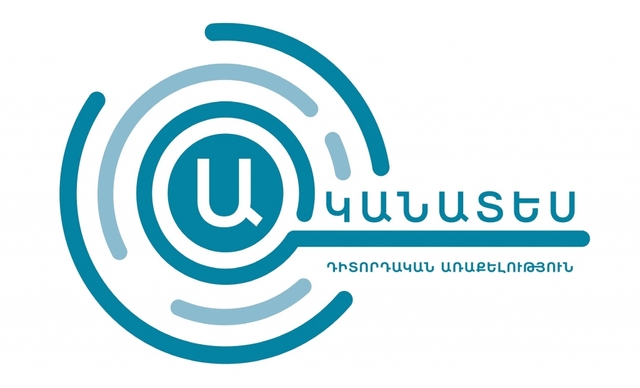Preliminary Statement on the Conduct of December 9, 2018 Elections
Akanates Observation Mission December 9, 2018 Snap Parliamentary Elections
Preliminary Statement on the Conduct of December 9, 2018 Elections
The Akanates (Eyewitness) domestic, non-partisan observation initiative was founded in 2018 by Transparency International Anticorruption Center, Journalists’ Club “Asparez” and “Restart” Civic Initiative. The partner of the mission is the Law Development and Protection Foundation.
Akanates monitored the December 9, 2018 snap parliamentary elections in all districts in Armenia using sample-based observation (SBO) methodology.
The initiative engaged 581 observers deployed to a sample of 300 polling stations, as well as 52 mobile observer teams and 41 observers in 37 Territorial Electoral Commissions (TECs). On election day, mobile teams visited 503 polling stations not included in the sample. TEC observation started at 20:00. The observation mission was supported by 30 lawyers and 30 operators within the framework of the Call Center based in Yerevan.
The SBO methodology evaluates the quality of election day processes using a random, representative sample of polling stations across the country. The sampling, based on statistical methods, allows Akanates to accurately measure the quality of election day processes nationwide, including polling station setup, opening, voting, closing and counting processes. While observers are not present in every polling station, the statistical nature of the sampling methodology allows Akanates to speak to electoral processes at the country level.
Election Day passed smoothly, however few serious critical incidents were recorded
Set up and opening
There were no problems with access to polling stations for Akanates observers. According to observer reports, electoral commissions mainly acted in compliance with procedures.
In 96% of polling stations, there was a necessary quorum of commission members at the preparation for voting, while the presence of unauthorized persons was observed at 1% of polling stations. In 98% of polling stations, the safe requirements were followed, as well as the ballot box requirements in 99% of polling stations. In 99% of polling stations the data on polling stations was input correctly and references on lack of voter participation were printed successfully.
No campaign materials of any participating political party were found in polling stations.
In 96% of polling stations, furnishing ensured the secrecy of the vote. In the other 4% of stations, problems that were encountered were resolved quickly. Observers found out that 48% of polling stations didn’t ensure accessibility for voters with disabilities.
The majority of polling stations opened on time at 8:00 am; however, 8.33% opened before 8:00 am, 9.67% opened between 8:01 and 8:15 am, and 0.33% (PEC # 25/15) opened after 8:16 am.
Voting
The voting process throughout Armenia was generally calm and conducted in accordance with the law. According to observers, Electoral Commission members generally followed prescribed voting procedures. There were few serious violations or incidents.
During voting process, the rights of persons who have the right to be present inside polling stations were hindered in 2.67% of polling stations (more than one case). Polling station commissions mostly recorded violations identified by observers in log books, while in 5.67% of polling stations violations were not registered (in one or more cases). In 17% of polling stations, there were 1-3 cases of voters who found signatures next to their names. In 1.33% of polling stations, because of a signature in front of a voter’s name, they were not allowed to vote (in 1-3 cases).
No major issues with voter identification machines were observed. In 24.3% of polling stations, some voters were not included on the device (1-3 cases), with 4-10 cases in 4.33% of polling stations, and 11-20 cases in 1% of polling stations. No voting without proper voter identification documents was observed.
Generally, the secrecy of the vote was respected. However, in 3.33% of polling stations, there were deliberate violations. In 21.67% of polling stations, open voting was observed (1-3 cases); in 7.33%, 4-10 cases were observed; and in 1.67%, 11 or more cases were observed. Directed voting was observed in 6% of polling stations.
Violations related to the proper procedures for voter assistance were observed in 6% of polling stations (one or more cases).
2% of polling stations were closed before 20:00, while 94% closed on time at 20:00, and 4% closed between 20:01 and 20:15.
Counting Processes
In general, observers found that polling stations generally followed necessary procedures defined by the law; only in 2.82% of polling stations were vote counting violations observed, while violations of counting procedures were reported in 6.34% of polling stations. Both protocol statement and participation certificate were provided to observers and other participants entitled to observe the vote counting process in 94.98% of polling stations. In 0.67% of polling stations, unauthorized persons were present at the vote counting.
Critical Violations
On election day, observers reported a number of critical violations or incidents during voting and counting procedures. The table below shows the number and type of 78 critical violations observed: in polling stations.
| Type of Violation | Number of Incidents | Number of Polling Stations |
| Presence of unauthorized persons | 17 | 17 |
| Secrecy of the vote violated | 6 | 6 |
| Violence, threats, or pressure | 3 | 3 |
| Polling station commission’s refusal to record Akanates’ remarks | 25 | 17 |
| Multiple voting and/or voting instead of another | 3 | 3 |
| Professional voter assistance | 6 | 6 |
| Open voting | 3 | 3 |
| Guided voting | 7 | 7 |
| Grave violations of summary procedures | 7 | 7 |
| Deliberately spoiled ballots | 1 | 1 |
Preliminary Conclusions on the Process at Territorial Election Commissions
To observe the vote tabulation process at the district level, 41 observers were deployed to 36 Territorial Electoral Commissions (TECs). The vote tabulation went smoothly, although observers reported a number of violations with TECs.
Observers continue to monitor critical incidents at the TEC level, and lawyers work on the development of complaints.
Preliminary Findings on the Speed of Voting
On the day of voting there was an analysis of participation data per polling station posted on the Central Electoral Commission’s website every 3 hours. The purpose was to reveal those polling stations where there had been a higher speed of voting, which could be a consequence of direct or indirect ballot stuffing. These speeds were compared with those periodically measured in different polling stations. Monitoring revealed 31 polling stations in which there was suspiciously high speed of voting. Compared to analysis last year during the parliamentary elections in 2017, there were 108 such precincts. In 4 polling stations, there had been ‘’negative’’ speed, when the number of voters in the following period were less than in the previous one.
Akanates will continue to monitor the post-election period and, if necessary, will release reports. The final report will be released in late January 2019.
Press Contact
Levon Barseghyan
Phone: (091) 821363
This mission is made possible by the financial support from the European Union, National Endowment for Democracy, United States Agency for International Development, National Democratic Institute and Open Society Foundations – Armenia.
The contents are responsibility of “Akanates” (Eyewitness) observation initiative and its member organizations and do not necessarily reflect the official views of donor organizations.






